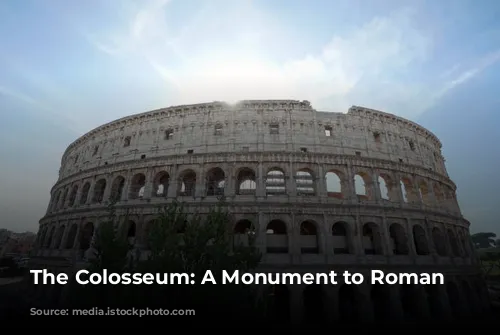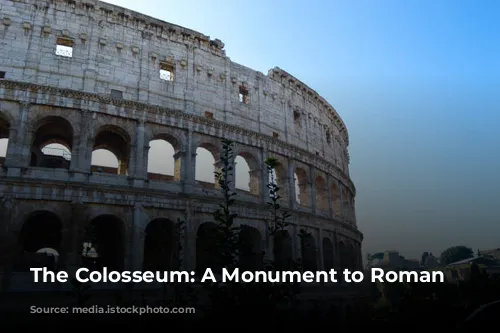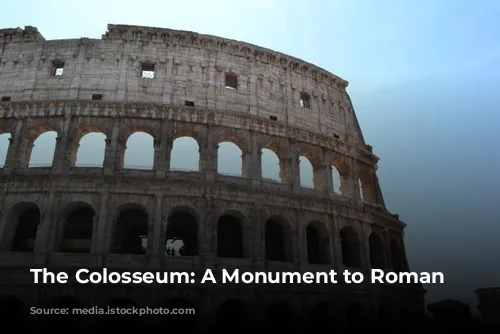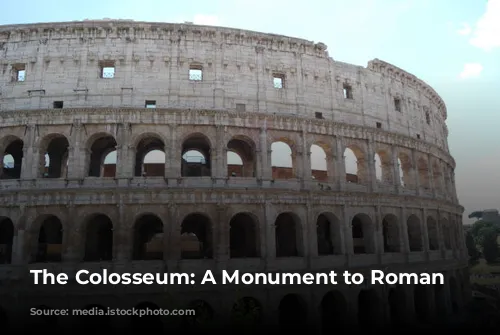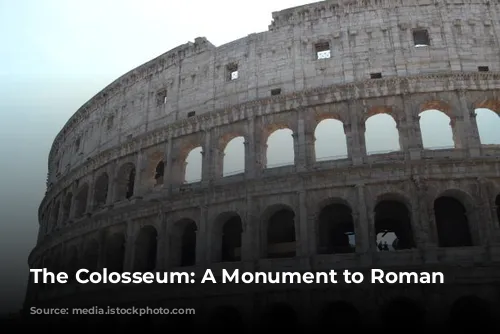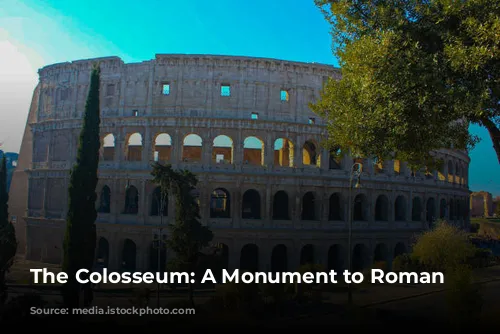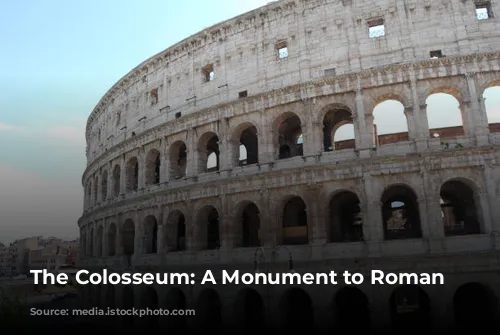The Colosseum, a towering symbol of Roman power, stands as the world’s largest amphitheatre. Built by Emperor Vespasian of the Flavian dynasty and inaugurated by his son Titus in 80 A.D., it was a testament to Roman engineering and spectacle.
A Century of Spectacle
The Colosseum’s inauguration was a lavish 100-day spectacle featuring gladiatorial combat, animal hunts, and even naumachiae – staged naval battles. It was a period of intense entertainment and grand displays of Roman prowess.
The Colosseum wasn’t always known by that name, though. A prophecy by the Venerable Bede in the Middle Ages, stating “Rome will exist as long as the Colosseum does,” likely gave rise to its most famous moniker. The term “Colosseum” might have been inspired by the towering statue of the Emperor Nero, “the Colossus,” which once stood nearby.
A Colossus of Architecture
The Colosseum is a remarkable feat of Roman architecture, with its elliptical shape designed to accommodate vast crowds. Its four floors were adorned with eighty arches, each embellished with statues on the second and third levels.
The Romans excelled in arch construction, a technique that allowed them to distribute weight effectively, as seen in their iconic aqueducts. The Colosseum itself can be viewed as a series of aqueducts stacked upon each other, showcasing their mastery of this architectural element.
A Glimpse into Roman Life
The Colosseum once boasted a dazzling white facade, completely covered in travertine stone slabs. Today, we see only its skeletal remains, a testament to its long and eventful history. Over centuries, it was stripped of its precious materials, used to build other structures, including St. Peter’s Basilica. The holes in its columns are a reminder of the marble, lead, and iron that were extracted.
The amphitheatre could hold up to 70,000 spectators, who were seated according to their social status. The lower seats were reserved for the elite, while the upper levels accommodated the common people, with separate sections for men and women.
Ingeniously designed, the Colosseum provided shade for its audience through its “Velarium,” a vast linen tarpaulin stretched across the arena using ropes, winches, and poles. A hundred sailors from the Imperial fleet were needed to maneuver this massive awning.
The Arena of Gladiatorial Combat
Stepping into the Colosseum today, we stand on the spot where once gladiators fought and animals clashed. The original arena floor, made of brick and wood, is gone, revealing the cellars where the equipment for the games was stored.
The two underground floors housed ingenious lifts and hoists that brought gladiators and animals into the arena through trapdoors, creating dramatic surprise effects. The arena could also be transformed with set-designed backdrops for the hunting events.
The Colosseum wasn’t just about entertainment; it was a powerful symbol of Roman unity and the might of the empire. By providing thrilling spectacles, it diverted the people’s attention from political issues and reinforced their allegiance to their leader.
A World of Spectacles
The Colosseum hosted a variety of shows, each tailored to specific times of day. In the morning, venationes, or animal hunts, took place, often involving exotic beasts.
More unique events, such as an elephant demonstrating its ability to write in the sand, also graced the arena. While the Colosseum was a place of spectacle, it is untrue that Christians were routinely executed there.
The gladiatorial combats, however, were the heart of the Colosseum’s entertainment. The audience would roar as the gladiators marched into the arena from underground passageways, greeted like heroes.
The Gladiators: Warriors of the Arena
The gladiators were a diverse group, with some being prisoners of war who chose to fight for their freedom, while others were impoverished individuals seeking fame and fortune. They were highly skilled warriors, each with unique weapons and fighting styles.
The gladiators fought for the entertainment of the crowd, and the emperor’s favor. The audience’s cheers could make or break a gladiator’s career. A victorious gladiator received gold palm leaves and riches, while the defeated faced the emperor’s judgment. A thumbs-up from the emperor meant life; a thumbs-down meant death.
Echoes of a Brutal Past
The spectacles held in the Colosseum were often brutal and violent by today’s standards. The smell of blood, burnt flesh, and wild animals permeated the air, creating an atmosphere of raw intensity.
The Colosseum’s history is a complex blend of entertainment, cruelty, and Roman power.
A Symbol of the Roman Empire
The Colosseum, once a vibrant center of entertainment, fell into disuse as the Roman Empire declined. It was used as a quarry for building materials, and eventually housed a cemetery and a hospital.
In the 18th century, the Colosseum was declared a sacred monument dedicated to the Passion of Christ, marking a significant shift in its perception.
Today, the Colosseum stands as a powerful reminder of the Roman Empire’s grandeur and its enduring legacy. It attracts millions of visitors each year, offering a glimpse into the past and a reminder of the enduring power of human ingenuity and spectacle.
